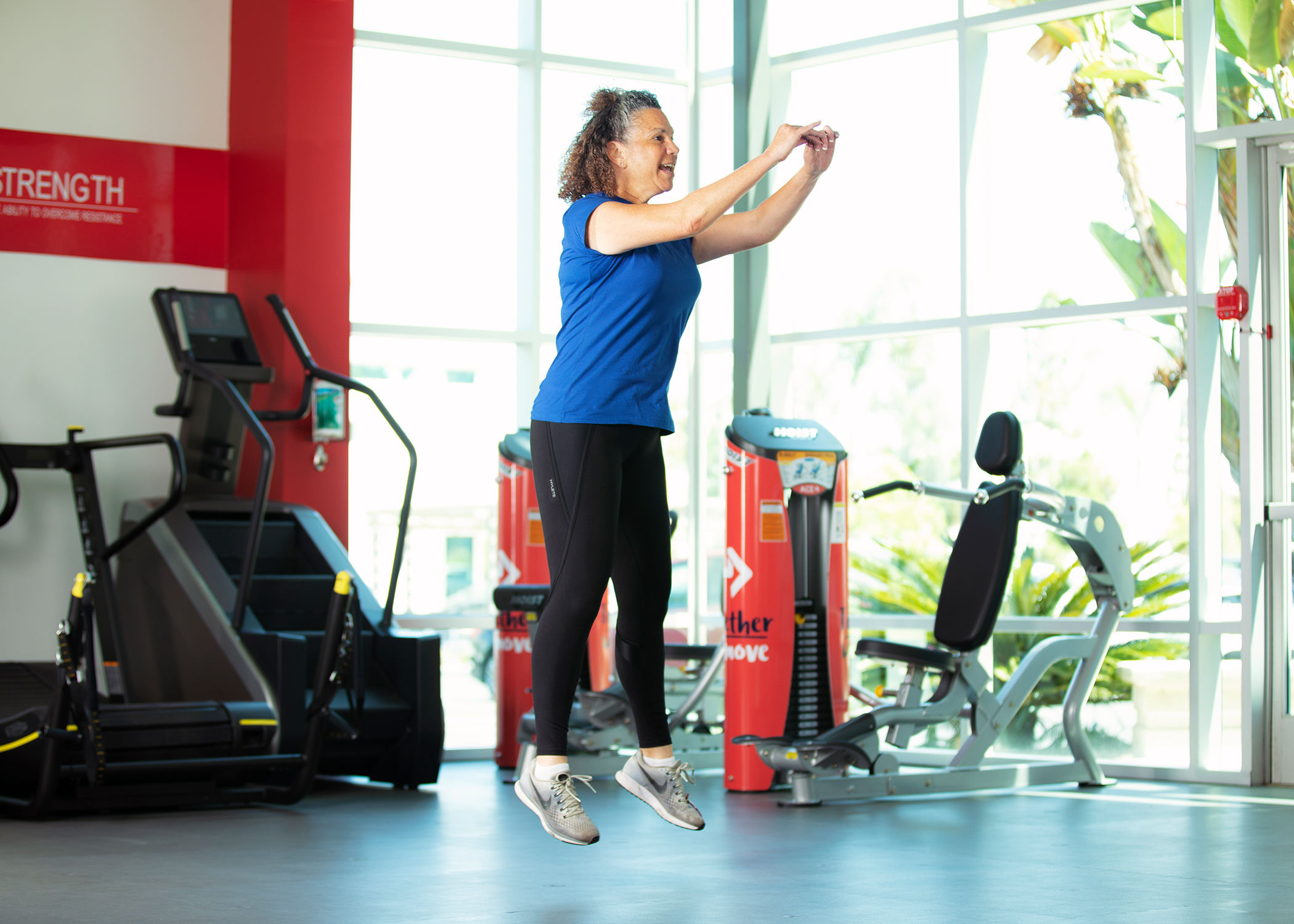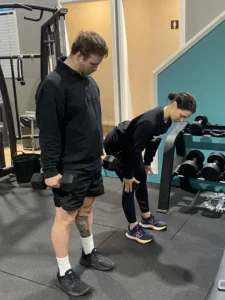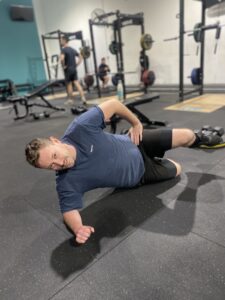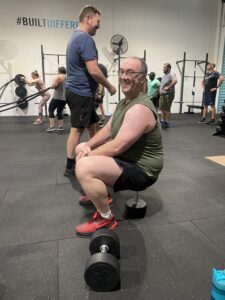When most people pick up a dumbbell or resistance band, they’re thinking about sculpting muscles or improving cardiovascular health. What many don’t realise is that they’re simultaneously fortifying their skeletal system in profound ways. Resistance training doesn’t just transform your physique—it fundamentally strengthens your bones, potentially preventing debilitating conditions like osteoporosis that affect millions worldwide.
I discovered this connection personally when my mother was diagnosed with low bone density at 62. Her doctor didn’t just prescribe medication; he wrote out a “prescription” for twice-weekly resistance training sessions. Six months later, her follow-up scan showed measurable improvements. This wasn’t mere coincidence—it was science in action.
The relationship between muscle exertion and bone fortification represents one of exercise science’s most valuable insights for long-term health. When muscles pull against bones during resistance exercises, they create beneficial stress that stimulates bone-forming cells into action. This process helps maintain and even increase bone mineral density (BMD), particularly in areas most vulnerable to fracture.
Let’s explore how incorporating strategic resistance training into your fitness regimen can build not just impressive muscles, but also create a robust skeletal framework that supports you throughout life. Whether you’re 25 or 75, it’s never too early—or too late—to start strengthening your bones through purposeful movement.

The Science Behind Bone Strength
Your skeleton isn’t a static framework—it’s living tissue constantly undergoing renewal. Specialised cells called osteoblasts build new bone while osteoclasts break down old bone material. This remodelling process continues throughout life, though after age 40, bone loss typically outpaces formation at approximately 1% annually.
This gradual decline explains why osteoporosis—a condition characterised by decreased bone mass and structural deterioration—becomes increasingly common with age. The statistics are sobering: approximately 66% of people over the age of 50 experience osteopenia (lower-than-normal bone density), with 25% of those experiencing osteoporosis.
The consequences can be severe. Fractures resulting from weakened bones often lead to diminished independence, chronic pain, and in some cases, life-threatening complications. Hip fractures are particularly devastating, with research indicating that 60% of individuals never fully regain their previous mobility after such injuries.
What makes resistance training so effective for bone health is its ability to create mechanical loading—essentially, controlled stress on bones. When muscles contract against resistance, they pull on bone attachments, generating forces that stimulate bone-strengthening responses. This mechanical loading triggers cellular signals that enhance mineral deposition and structural reinforcement within bone tissue.
Research consistently demonstrates that individuals who engage in regular resistance training maintain higher bone density compared to sedentary counterparts. A landmark study published in the Journal of Bone and Mineral Research found that progressive resistance training increased lumbar spine bone mineral density by an average of 1.82% over six months in postmenopausal women—precisely when natural bone loss typically accelerates.
Types of Bone-Building Exercises
Not all exercises contribute equally to skeletal strength. The most beneficial activities for bone health fall into two primary categories: weight-bearing impact exercises and muscle-strengthening resistance training. The ideal programme incorporates both types for maximum benefit.
Weight-Bearing Impact Exercises
These activities force you to work against gravity while remaining upright. The impact creates ground reaction forces that travel through your skeletal system, stimulating bone formation.
- Brisk walking on varied terrain
- Stair climbing
- Jogging at comfortable pace
- Tennis or badminton
- Skipping with proper technique
- Low-level jumping exercises
- Plyometric jumping exercise

Resistance Training for Skeletal Strength
While impact exercises primarily benefit the lower body, resistance training can target specific skeletal areas most vulnerable to osteoporotic fractures: spine, hips, and wrists. Progressive resistance training—gradually increasing the challenge over time—proves particularly effective.
The four fundamental movement patterns that optimally stimulate bone formation include:
- Hinge movements – Exercises like deadlifts and bridges that strengthen the posterior chain and spine
- Push exercises – Movements such as push-ups and overhead presses that load the upper body and wrists
- Pull motions – Rowing variations and pull-ups that strengthen the back and arm bones
- Squat patterns – Deep knee bends and variations that comprehensively load the lower skeleton

For beginners, bodyweight exercises provide an excellent starting point. As strength develops, adding resistance bands, dumbbells, barbells, or weight machines creates progressive overload necessary for continued bone adaptation. For beginners working with an experience coach or personal trainer is advisable to ensure correct technique and proper workout structure. To speak with one of our expert coaches please click here.
Creating Your Bone-Building Exercise Program
Designing an effective bone-strengthening regimen requires balancing several factors: your current fitness level, existing bone health, other medical conditions, and personal preferences. Here’s a framework for developing your personalised approach:
Frequency and Duration
For optimal bone stimulation, aim to:
- Include resistance training 2-3 non-consecutive days weekly (allowing 48 hours between sessions for recovery)
- Incorporate approximately 30 moderate impacts (jumps, hops, or skips) daily if your bone health permits
- Limit prolonged sitting; stand briefly every hour even on non-exercise days
Intensity Guidelines
The effectiveness of resistance training for bone health depends largely on intensity. Research indicates that performing exercises at 70-85% of your maximum capacity creates optimal bone-strengthening stimulus. In practical terms:
- Choose weights that allow 8-12 repetitions with proper form
- The final 2-3 repetitions should feel challenging
- Gradually increase resistance as exercises become easier
- Focus on controlled movements rather than momentum
For those new to resistance training or returning after a break, begin with lighter loads to develop proper technique and connective tissue strength before progressing to heavier loads.
Safety Considerations
While resistance training benefits nearly everyone, certain modifications may be necessary depending on your health status:
For Those with Diagnosed Osteoporosis:
- Avoid exercises requiring extreme forward flexion of the spine
- Use caution with rotational movements
- Focus on proper form rather than maximum weight
For Those with Joint Issues:
- Select exercises that minimise discomfort
- Use machines that control movement patterns
- Incorporate longer warm-ups
For Beginners of Any Age:
- Master bodyweight movements before adding external resistance
- Consider working with a qualified fitness professional initially
- Progress gradually rather than rapidly
- Focus on technique development before intensity
Sample Bone-Strengthening Workout
Here’s a balanced workout suitable for most beginners seeking to enhance bone density:
Warm-Up (5-10 minutes):
- Gentle walking or marching in place
- Deep squat to world’s greatest stretch
- Glute bridges
Weight-Bearing Impact Component (10 minutes):
- Gentle two-footed jumps (if appropriate) (10 repetitions)
Resistance Training Component (20 minutes):
- Squat to box (10-12 repetitions)
- Push Ups(10-12 repetitions)
- Resistance band rows (10-12 repetitions)
- Glute bridges (10-12 repetitions)
- Complete 2-3 sets of each exercise
Cool-Down (5 minutes):
- Gentle stretching for major muscle groups
- Deep breathing exercises
- Balance practice in a safe environment

As fitness improves, gradually increase the challenge by adding resistance, incorporating more challenging variations, or increasing repetitions.
Beyond Exercise: Supporting Bone Health Holistically
While resistance training provides powerful stimulus for bone strengthening, several complementary factors enhance its effectiveness:
Nutritional Support: Ensure adequate calcium intake (700-1000mg daily for adults) through dairy products, fortified plant milks, leafy greens, and small bony fish. Vitamin D (10μg daily) facilitates calcium absorption and bone mineralisation. Consider having your vitamin D levels checked, particularly if you live in regions with limited sunlight.
Lifestyle Factors: Limit alcohol consumption and avoid smoking, as both significantly impair bone formation. Maintain healthy body weight, as being significantly underweight increases fracture risk while obesity places excess stress on joints.
Medical Considerations: Discuss bone health with your healthcare provider, particularly if you have risk factors for osteoporosis. Certain medications can affect bone metabolism, and periodic bone density screening may be appropriate depending on your age and risk profile.
Remember that consistency trumps perfection when it comes to bone health. Even modest but regular resistance training yields significant benefits over time. Your skeleton responds to the challenges you present—give it the right stimuli, and it will grow stronger to meet those demands.
By incorporating targeted resistance training into your fitness routine, you’re making an investment in your skeletal health that will pay dividends for decades to come. Strong bones don’t just prevent fractures—they provide the foundation for an active, independent lifestyle throughout your lifespan.
P.S. To learn more about all things health and fitness remember to check out our other BLOG posts as well as The Performance Hub Podcast!



